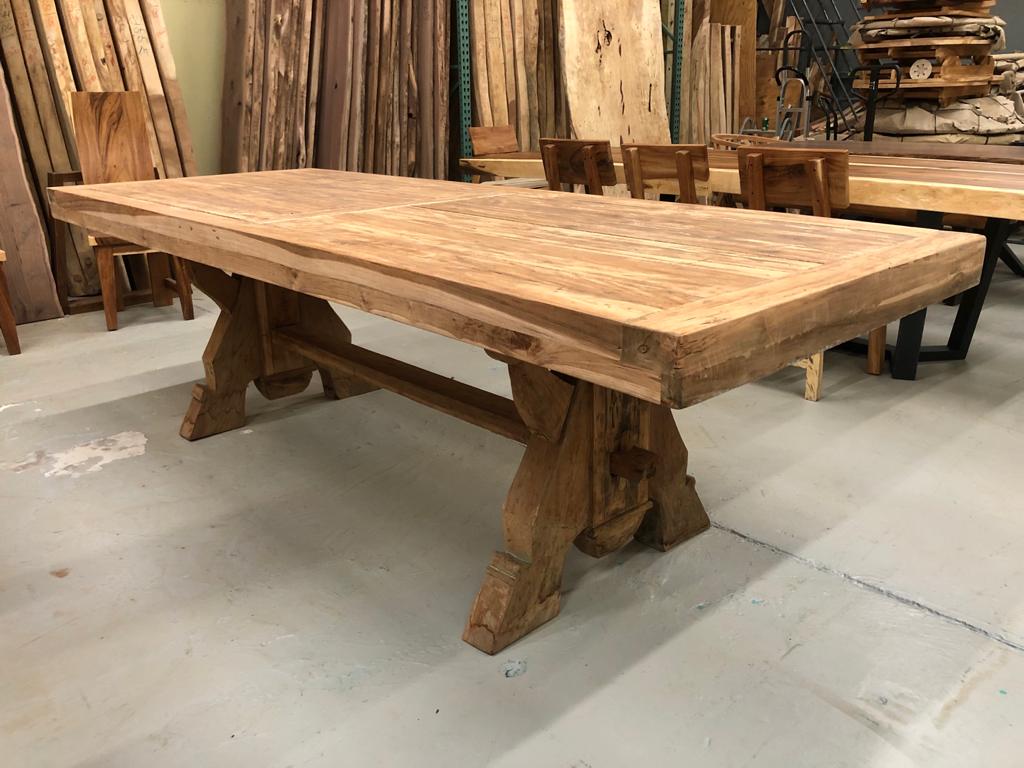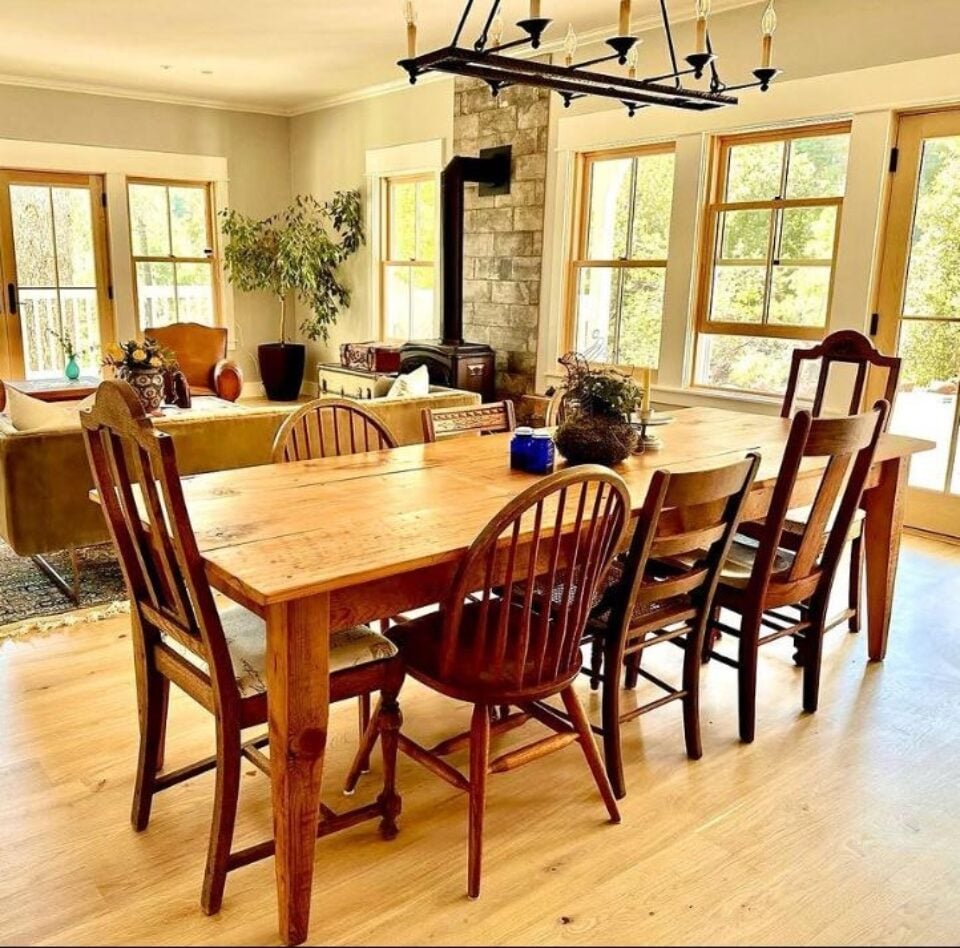Add a Rustic Touch to Your Table with Classic Dining Table Legs Wood
Add a Rustic Touch to Your Table with Classic Dining Table Legs Wood
Blog Article
Checking Out the Different Kinds Of Table Legs Timber for Your Eating Area
The selection of eating table legs wood can exceptionally influence both the aesthetic and useful qualities of your eating room. Solid wood options, such as oak and walnut, offer a traditional appearance with unmatched sturdiness, while crafted timber choices offer innovative styles that simulate the splendor of natural grains.
Strong Timber Options

Unlike crafted products, strong timber is much less susceptible to bending and damage over time when correctly preserved. Each piece of solid wood is unique, showcasing individual characteristics that include to the beauty and personality of the eating table.
Furthermore, solid wood can be finished in numerous means, varying from natural oils to stained finishes, permitting home owners to individualize their furnishings to match their style. In summary, picking strong wood for dining table legs not just guarantees architectural honesty yet additionally improves the visual appeal of the eating area, making it a beneficial investment for any kind of home.
Engineered Timber Alternatives

Plywood, built from several layers of wood veneer, is steady and especially solid, making it a superb choice for eating table legs. Its split make-up enables it to endure adjustments in moisture and temperature level much better than traditional strong wood. MDF, on the various other hand, provides a smooth surface area for painting or veneering, making it possible for designers to attain a polished appearance while preserving architectural integrity.
When choosing crafted timber options, it is essential to consider the designated usage and preferred aesthetic. These materials not only enhance the functionality of eating spaces however additionally enable for greater layout versatility, making certain that typical and modern styles can exist together harmoniously.
Reclaimed Wood Features
Reclaimed wood offers a distinct mix of sustainability and character, making it a progressively preferred selection for dining table legs. Sourced from old barns, manufacturing facilities, and other frameworks, reclaimed timber symbolizes a background that new products just can not replicate. Each piece brings its very own story, marked by distinctive imperfections, knots, and varying grain patterns, which add to a wikipedia reference table's unique visual charm.
In enhancement to its aesthetic appeal, recovered timber is an eco-friendly option. By repurposing formerly utilized materials, it lowers the demand for new lumber, hence assisting to save forests and decrease waste. This straightens with an expanding consumer choice for sustainable methods in decor.
Additionally, redeemed wood is frequently more resilient than newly harvested timber because of its age. The all-natural drying process that reclaimed timber undergoes lead to a denser and more powerful product, making it less at risk to warping and splitting. This enhances the durability of dining tables, permitting them to withstand the rigors of everyday usage.
Softwood vs. Hardwood
When selecting table legs, recognizing the distinctions in between softwood and wood is essential for achieving both aesthetic and functional objectives. Softwoods, originated from coniferous trees, such as want and cedar, are defined by their lighter weight and ease of adjustment. They normally show a more rustic appearance, making them ideal for country-style or informal dining rooms. Softwoods are typically less long lasting than hardwoods, which can be a consideration for family members or those seeking long life in their furniture.
On the other hand, woods, sourced from deciduous trees like oak, cherry, and maple, are renowned for their density, stamina, and resilience. The intricate grain patterns and abundant hues of woods supply a innovative and classic allure, making them optimal for official eating settings. While hardwoods tend to be much more expensive and much heavier, their durability versus damage usually justifies the financial investment.
Ultimately, the option in between softwood and wood for eating table legs ought to align with your style vision, use requirements, and spending plan, making sure that your dining space shows your personal style while continuing to be useful gradually.

Therapies and finishes
The aesthetic allure and longevity visit this website of table legs can be significantly improved with numerous finishes and treatments. These processes not just safeguard the wood from damages yet likewise raise its appearance, allowing it to complement varied interior designs.
One usual therapy is tarnishing, which passes through the wood and enhances its natural grain while including color. Spots supply a rich, sophisticated look, enabling homeowners to match their furniture with existing i was reading this decoration. On the other hand, clear coatings such as polyurethane or varnish create a protective layer without changing the timber's initial color, making certain resilience versus wear and tear.
Additionally, natural oils, like tung or linseed oil, nourish the wood and supply a subtle luster, all while being environment-friendly. These oils permit the surface area to breathe, avoiding moisture build-up and prospective warping.
For those looking for a rustic charm, weathered or distressed coatings can be related to produce an aged look, including character to the piece. Inevitably, the choice of therapies and finishes relies on individual choice, wanted aesthetic appeals, and the particular timber kind, making it necessary to consider these elements when choosing table legs for your area.
Conclusion
Strong timbers, engineered choices, and reclaimed options each offer unique benefits, providing to various preferences and requirements. Eventually, the selection of wood kind should align with desired style, sturdiness, and environmental factors to consider, enhancing the overall eating experience.
The option of dining table legs wood can exceptionally impact both the useful and visual qualities of your dining room - Dining Table Legs Wood. Strong timber options, such as oak and walnut, offer a timeless look with unparalleled longevity, while engineered timber alternatives offer ingenious designs that simulate the splendor of natural grains. Solid timber uses a timeless top quality that can elevate the overall layout of an eating room. Each piece of solid wood is one-of-a-kind, showcasing private characteristics that add to the charm and character of the eating table
Moreover, reclaimed timber is usually more durable than freshly gathered wood due to its age.
Report this page